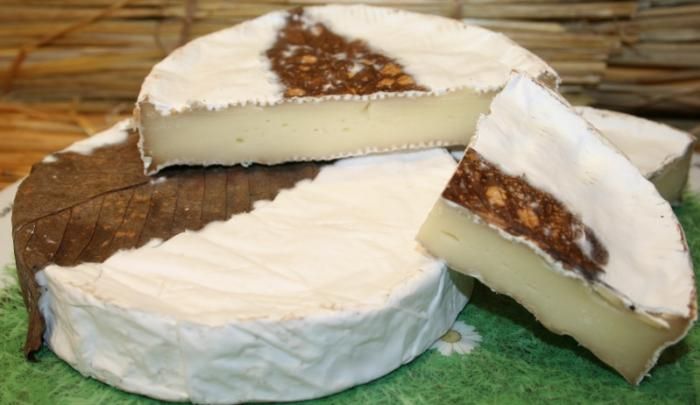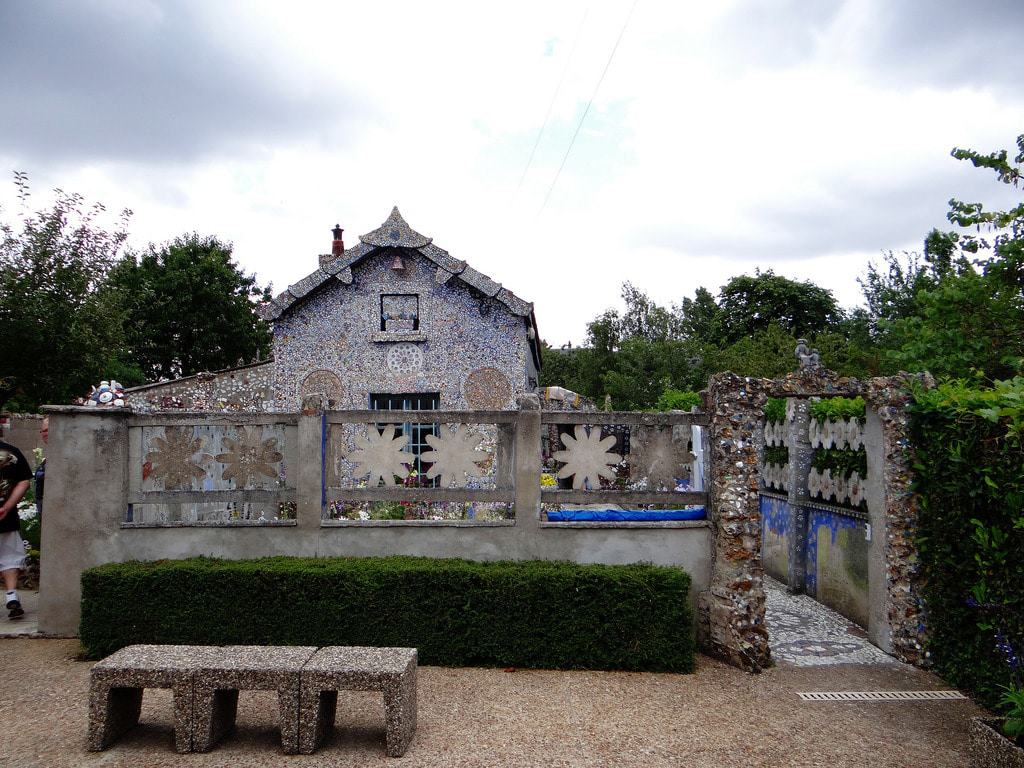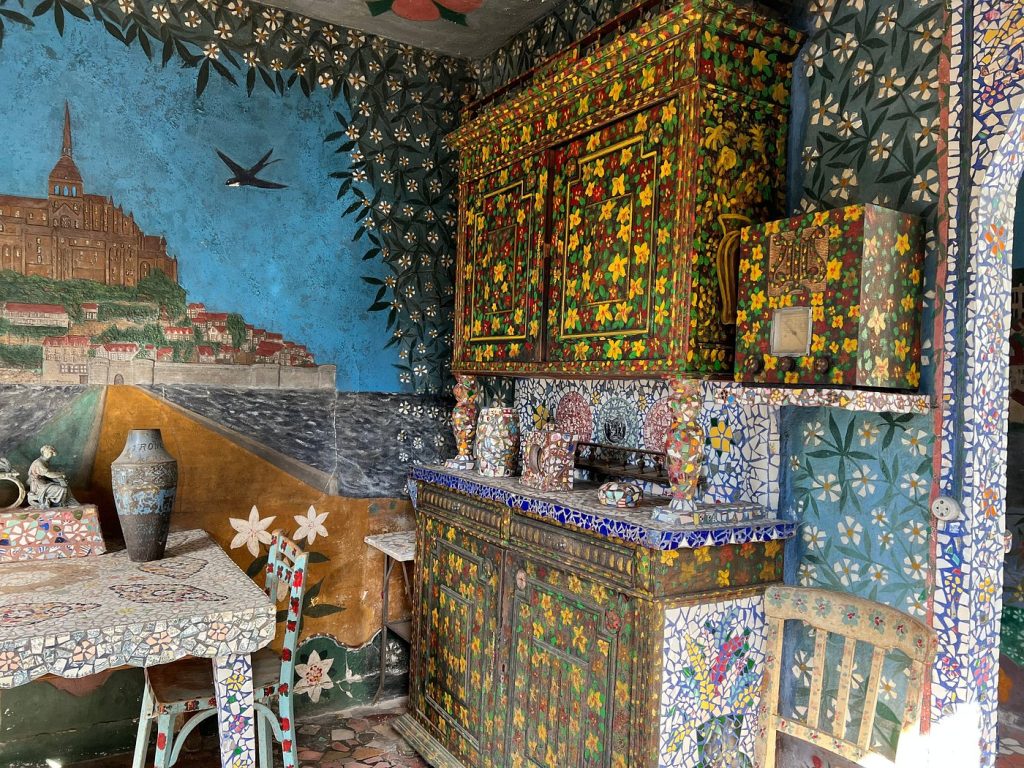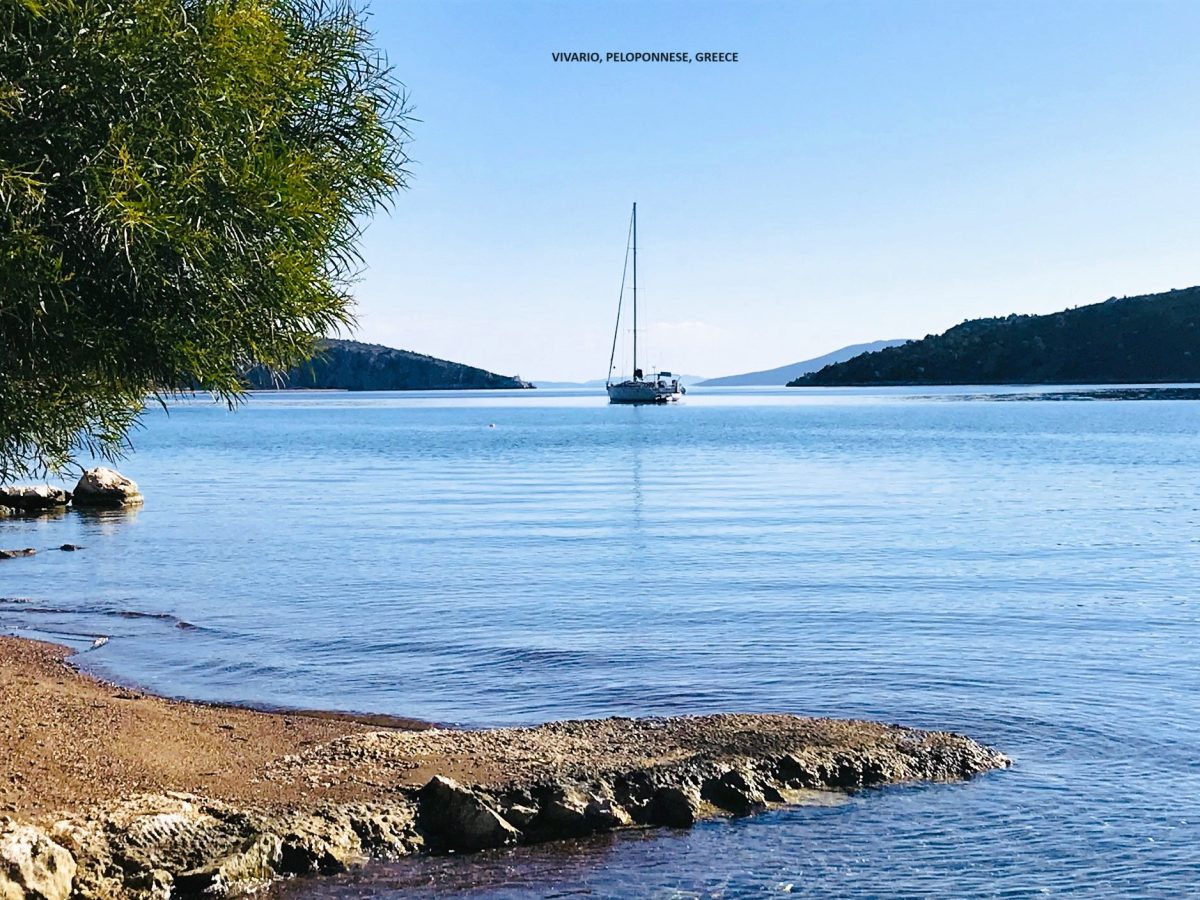I don’t know why but we have often passed Chartres on our way through France and not once thought to visit the place. We stopped this time only because the municipal campsite is close to the town centre and on a direct line to our next destination on the English Channel. We’re pleased we did. Chartres is a charming historical city with a majestic medieval cathedral and a very pretty old town down by the River Eure. Add to this that the city operates an absolutely stunning light show every evening (Chartres en Lumiere) and you will understand why we’ll be coming back.
Considering the trials and tribulations the city has endured over the years (I’ll talk a little about that), it’s medieval centre and especially it’s cathedral are incredibly well preserved and a joy to wander.
I followed the banks of the River Eure into the city; the route taking me along narrow cobbled streets and past colourful half timbered houses, medieval wash houses, olde worlde water mills and numerous picturesque humpbacked bridges. It was picture postcard views all the way.

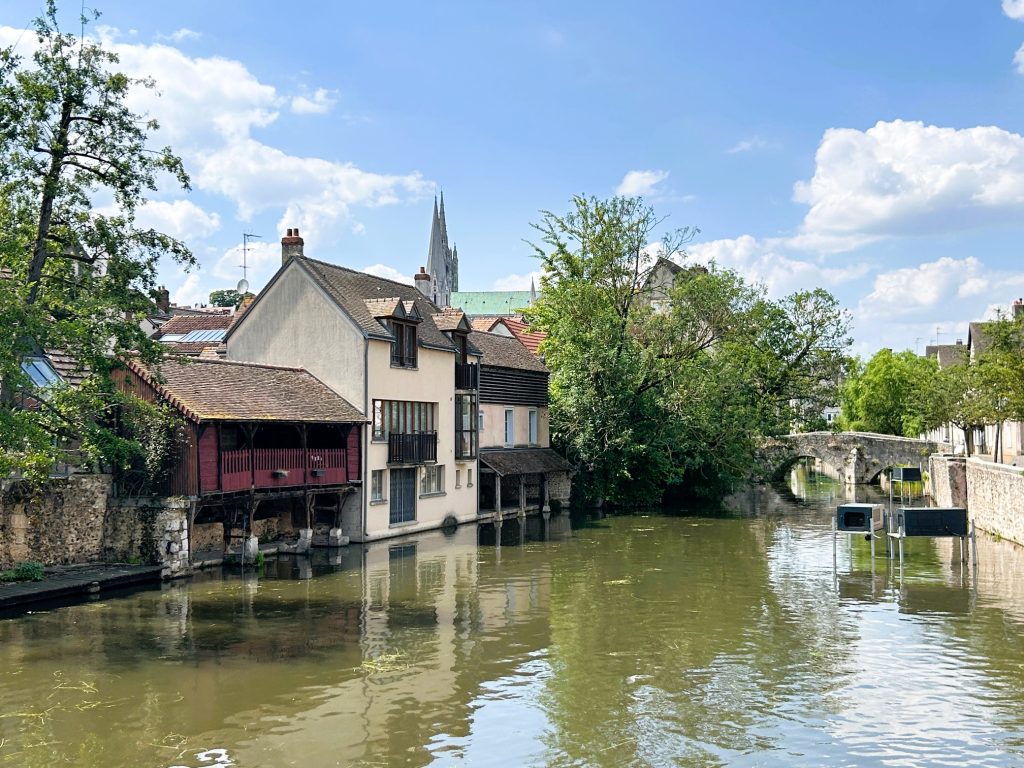
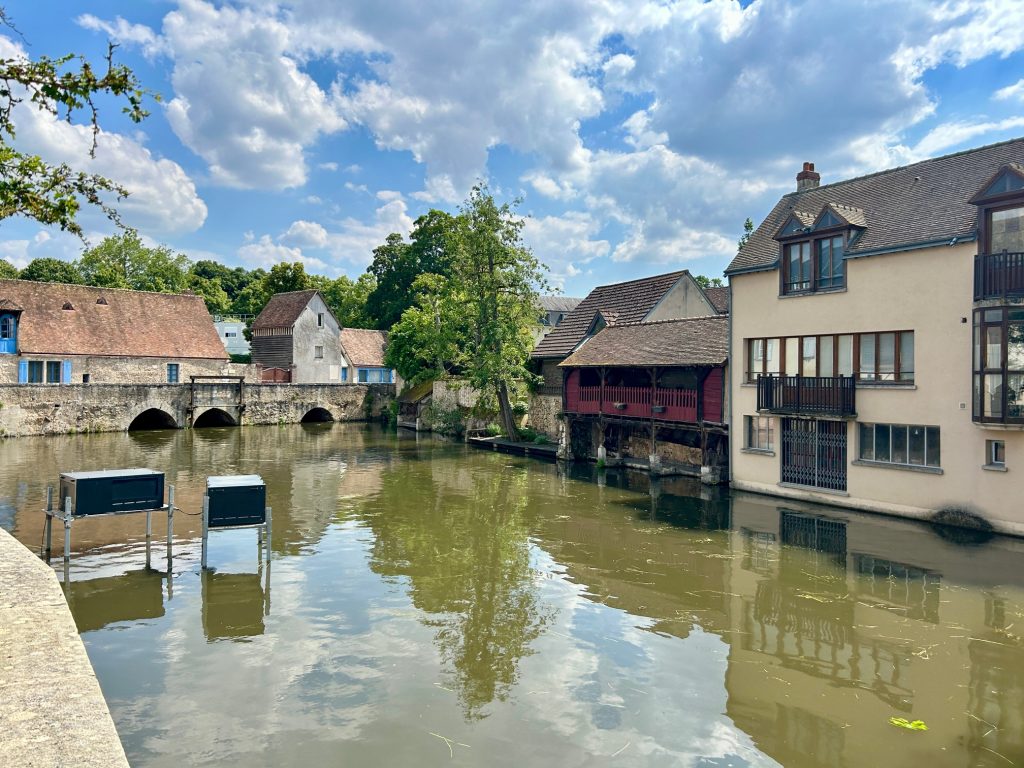
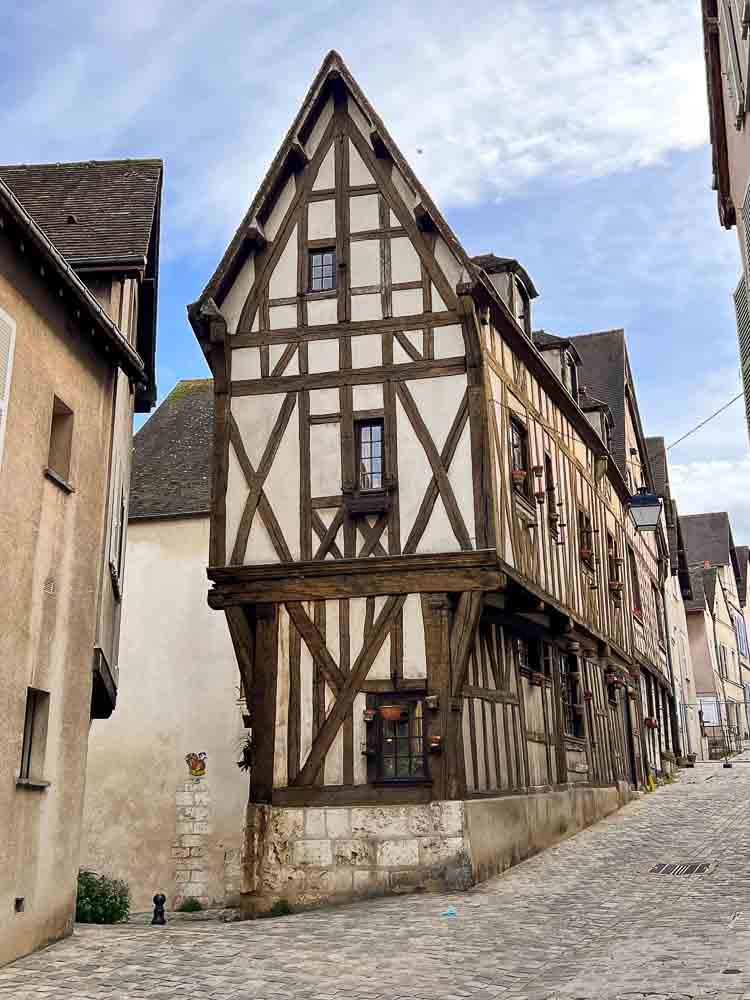
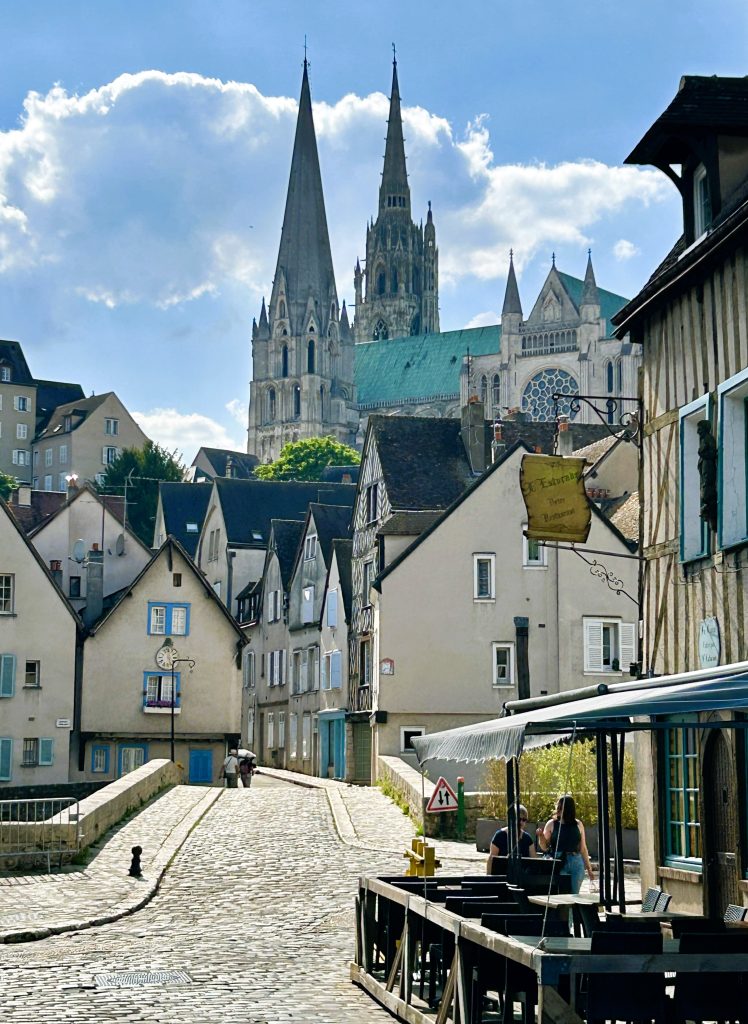
After exploring much of what I shall call ‘downtown’ Chartres, I decided to visit three of the more prominent churches in the city: Eglise Saint Pierre, the Parish Church of Saint Aignan and, of course, the Cathedral Notre Dame de Chartres. It was time to go uptown.
Few if any people would want to follow the route I took to the upper part of the city. Tortuous is an understatement. I couldn’t help it. My excitement with the city was increasing with every step; so much so that I wanted to press on and see more but; every time I glanced back I would see something I had missed and would have to retrace my steps or, all too often, be drawn in yet another direction. It was almost intoxicating.

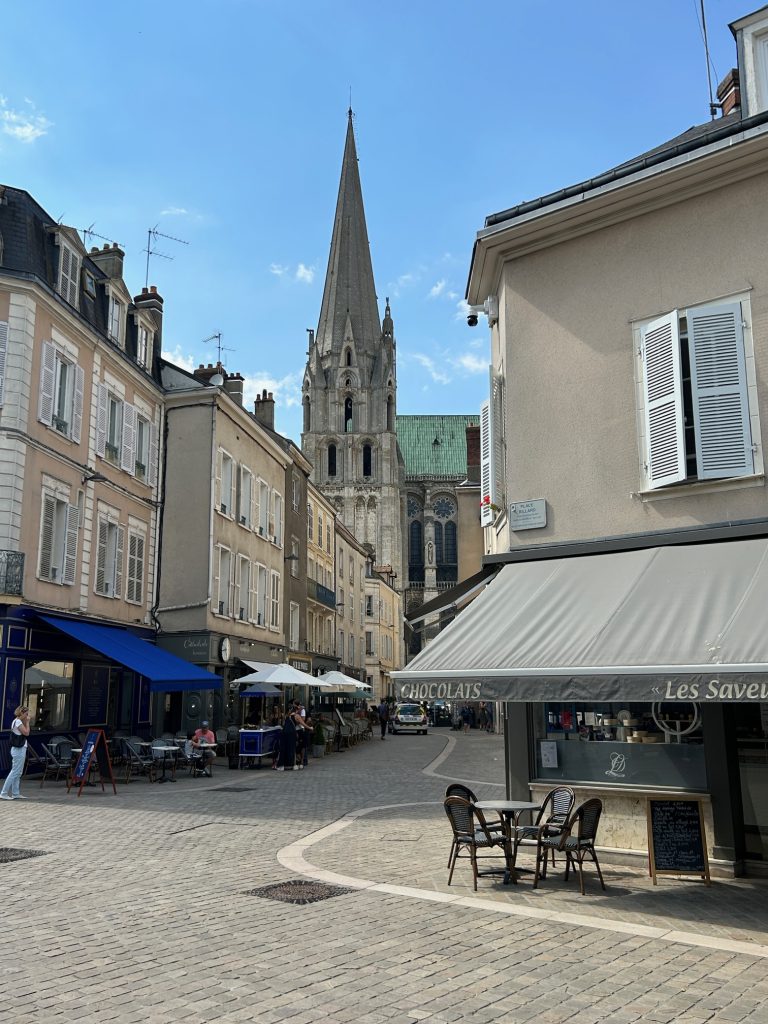
It took a while but, eventually I managed to collect myself and head straight for the Eglise Saint Pierre without constantly looking back! Chartres is a compact little city and this more direct approach soon saw me reach the church by a route which took me past the Maison du Saumon on Rue de la Poissonerie (now a tourist information office) and the Marche aux Legumes on the Place Billard (where farmer’s markets are held every Wednesday and Saturday). I paused briefly at the tourist information office to obtain details as to the evening’s light and sound show and picked out a restaurant on Place Billard where we could have dinner that evening but, otherwise, I kept moving
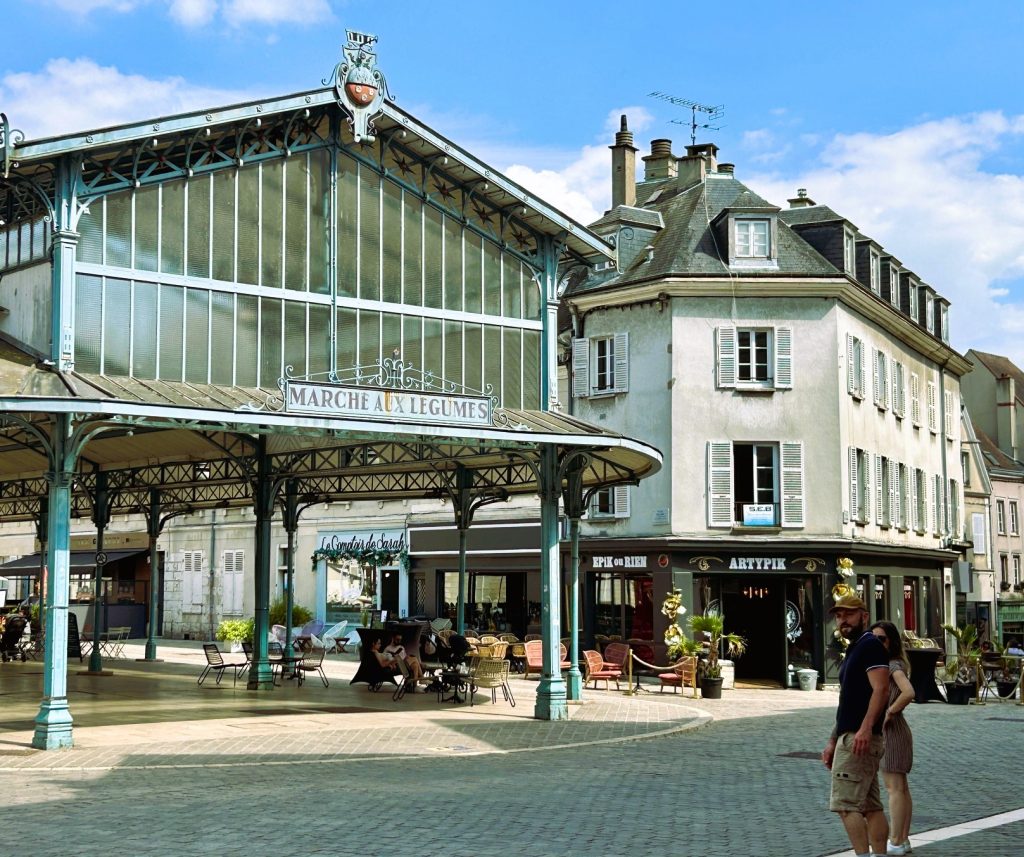
The Eglise Saint Pierre (formerly the 7th century Saint Pere en Vallee Abbey and part of a Benedictine monastery) obviously lives in the shadow of the city’s cathedral. Unlike the cathedral, it is in serious need of renovation both inside and out. It started to deteriorate during the French Revolution when the abbey cloister was removed and the monastery’s outbuildings were converted into a cavalry barracks; with the church itself being emptied and used as a saltpetre factory. Steps were subsequently taken to restore the church but time and lack of real investment has taken a heavy toll and it is sad to see a building, once so venerated, in such disrepair.
Little effort seems to have been made to restore the church to it’s former glory and I didn’t take many photos of the outside of the church because, frankly, it looks rather shabby. This was one of those rare occasions when I would have dearly liked to see a church covered in scaffolding (as part of a restoration process).
My final thoughts as I took a last look at the outside of St Pierre’s were that (i) I would have to look inside the building for any remaining majesty the church may have and (ii) the exterior of the church may look better at night when lit up as part of the ‘Chartres en Lumiere’ spectacle. I was to be delighted on both counts. The inside of the church does look equally tatty, with parts of the stonework falling away, but I left the building feeling that whatever it lacks in resplendent majesty is more than compensated for by a dignified simplicity. Oh to see it properly restored…
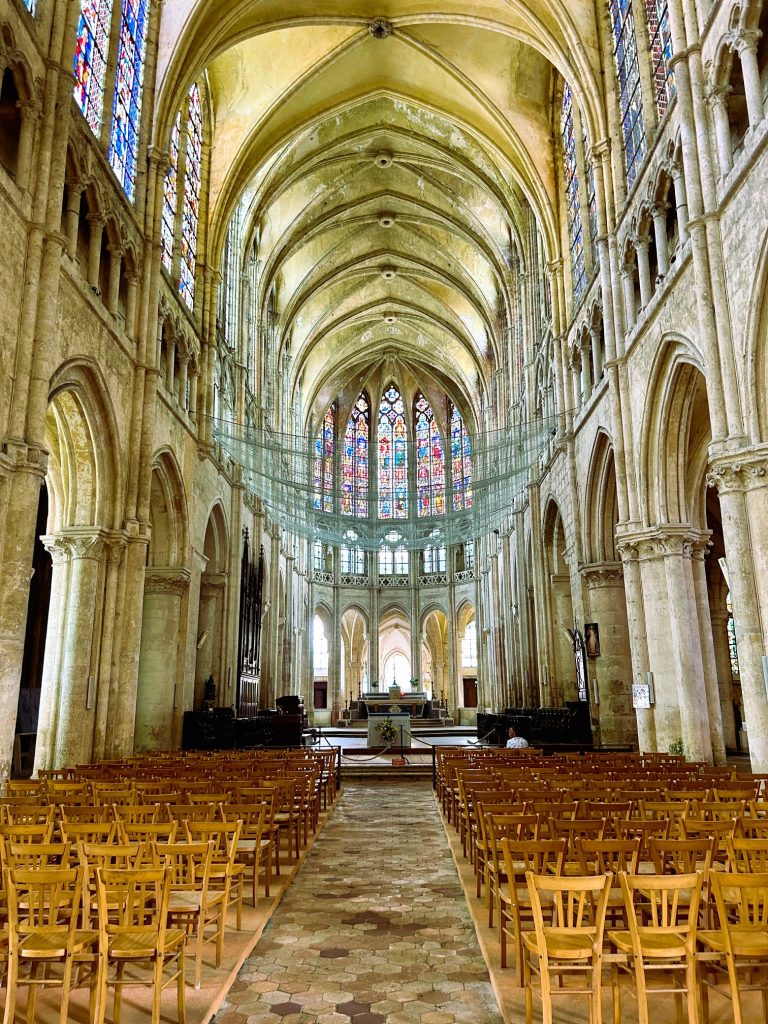
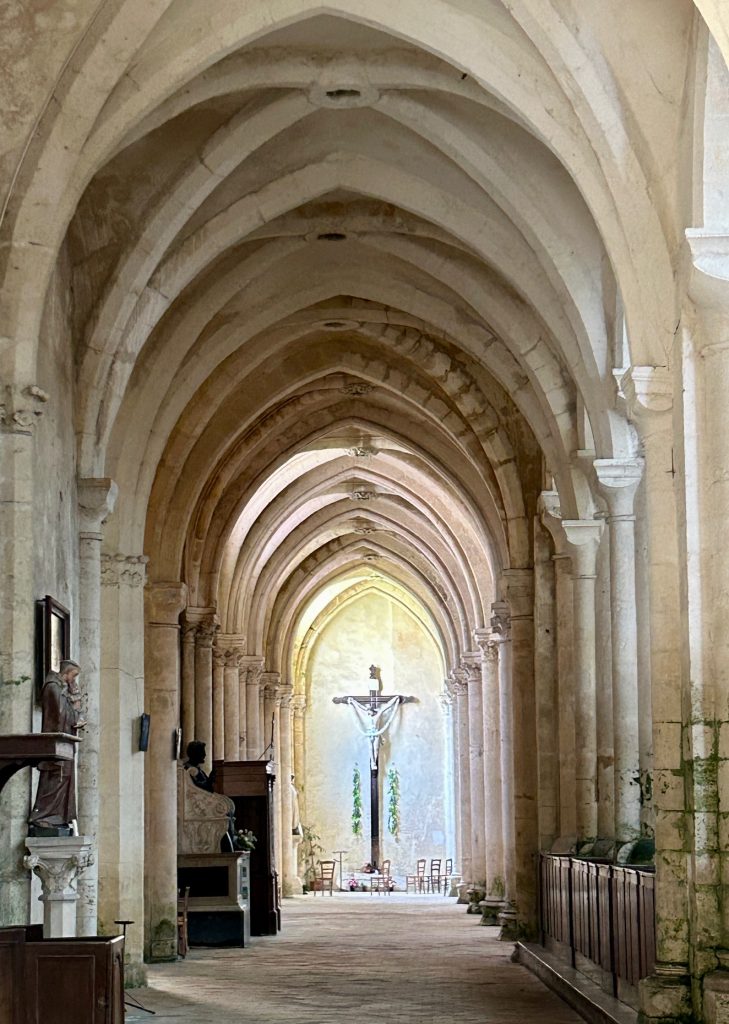


Less than 5 minutes walk from Eglise Saint Pierre is the Parish Church of Saint Aignan. This was to be my next stop.
This 16th century structure, built on the site of much earlier churches (one of which was standing in 400AD), also lives in the shadow of the cathedral. It is considerably smaller than both the Cathedrale Notre Dame de Chartres and the Eglise Saint Pierre and, whilst not as neglected as the Saint Pierre, it is rather tired. No matter; with it’s painted wooden interior, faded frescos, 16th century stained glass windows (one of which had to be repaired after being hit by an artillery shell during France’s religious wars) and many interesting corners and artefacts, Saint Aignan has real character and is one of the most spiritual and impressive churches I have ever entered. I adore it and when taking photos I sought to capture some of it’s more intriguing aspects.

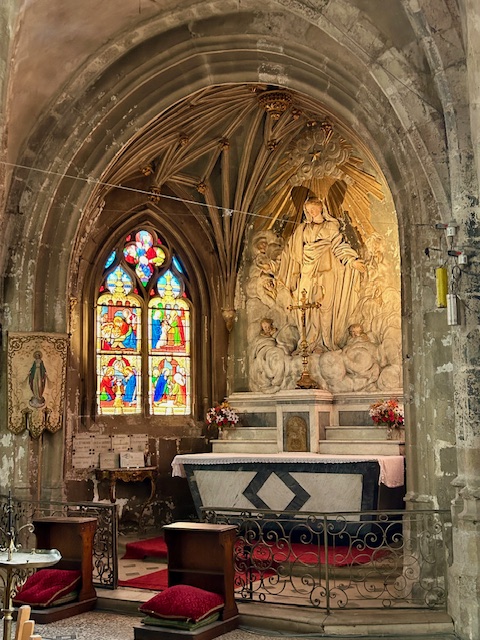
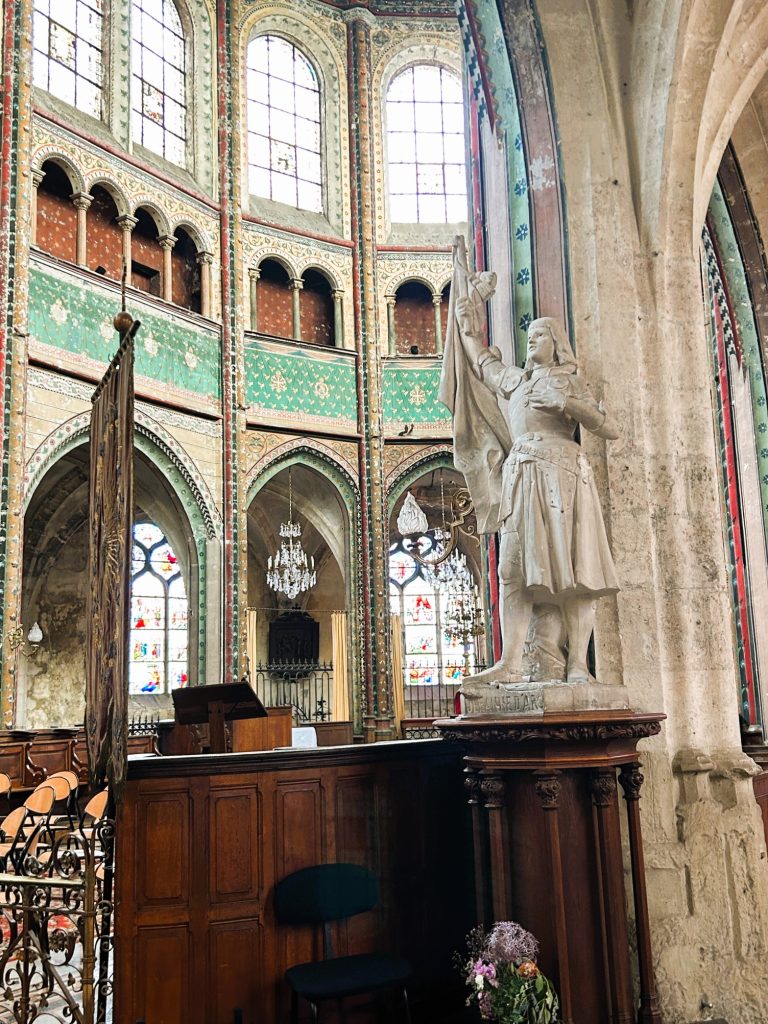
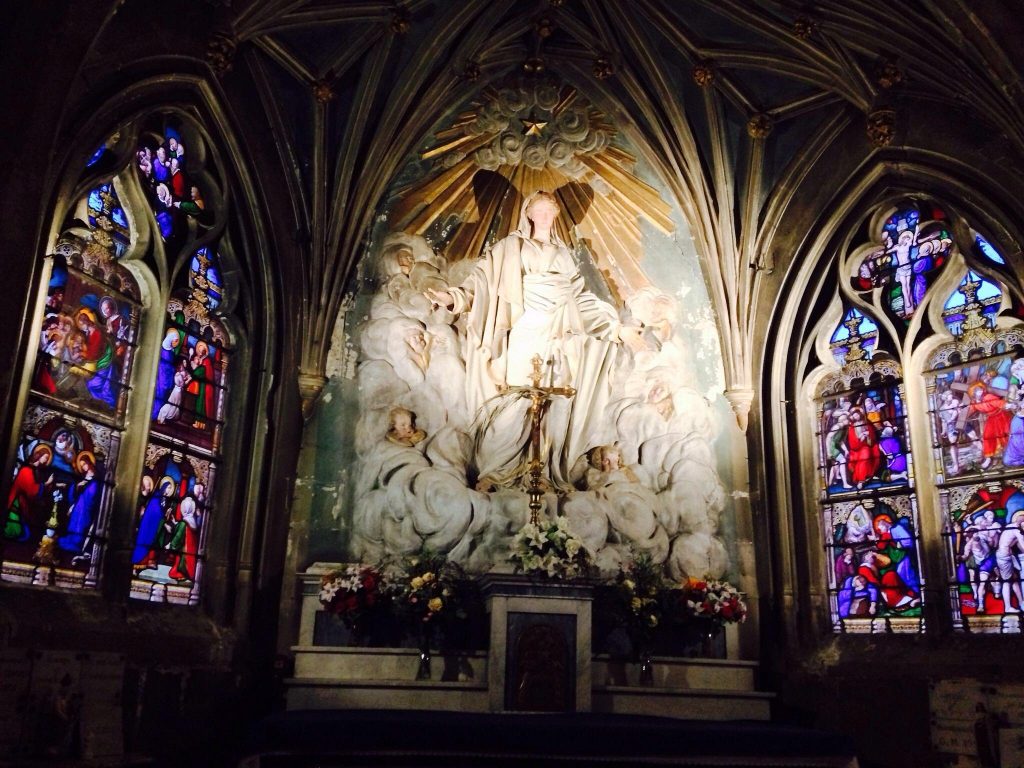
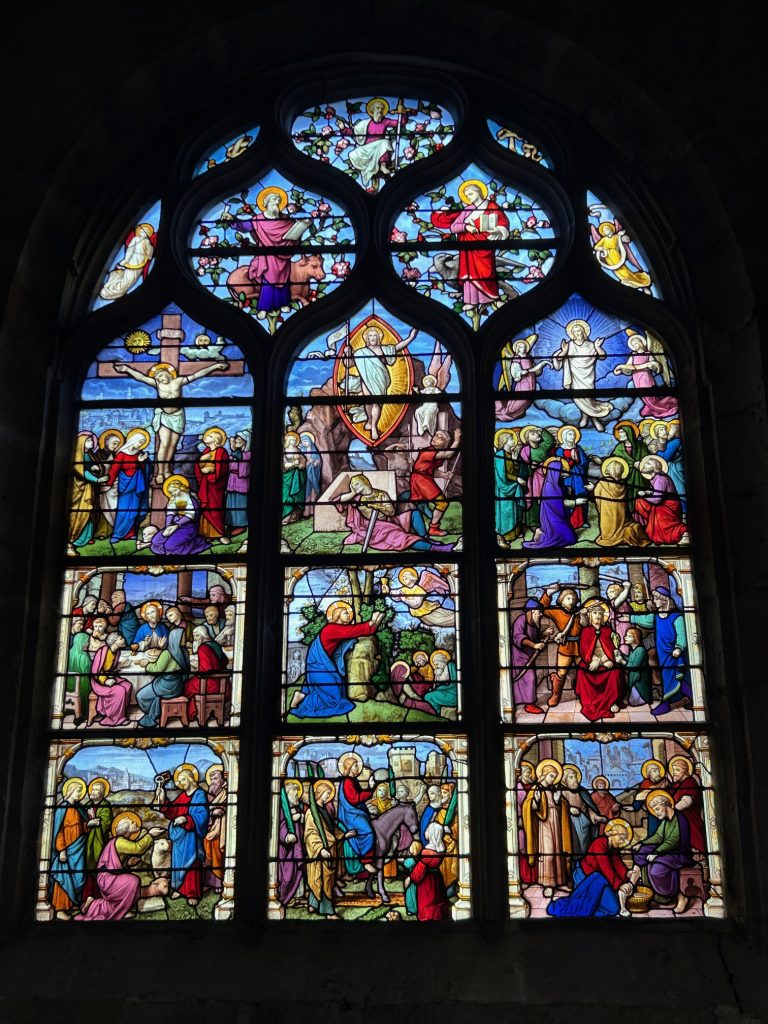
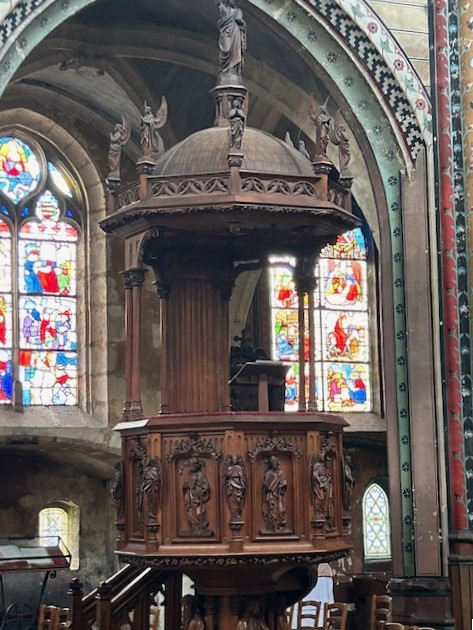
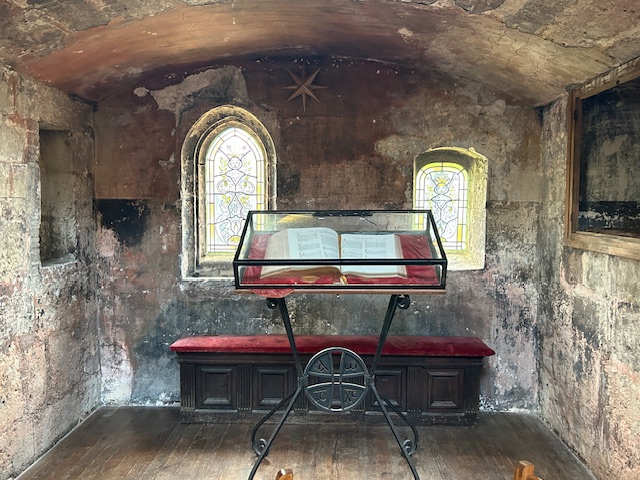
Clearly, Saint Aignan has experienced it’s fair share of history and no more so than during the French Revolution when a wave of desecrations took place in Chartres. Amongst others, the churches of St Michael, St Hilaire, St Saturnin and St Martin le Viandier were all totally destroyed. Some others, such as the churches of St Andre and Ste Foy, were left mostly in ruins; while others still, including St Aignan, were deconsecrated and their relics desecrated. Saint Aignan was used as a warehouse and then, towards the end of the Napoleonic Wars (in 1814), as a jail to hold Prussian, Russian and Austrian prisoners of war. Finally, it served as a fodder granary until in 1822 it was returned to the city upon condition it be restored as a Catholic church. I’ll say it again, I adore the place. I’ve never been in a church with so much character and atmosphere.
From the Parish Church of Saint Aignan I made my way to the most famous of Chartres’ religious buildings, the UNESCO listed Cathedrale Notre Dame de Chartres. Built between 1190 and 1220 it is a grander version of at least five earlier cathedrals that once stood on this site. It is one of very few cathedrals around the world which remains largely intact from the day it was built. Indeed, most of the stained glass windows date back to when the cathedral was built.
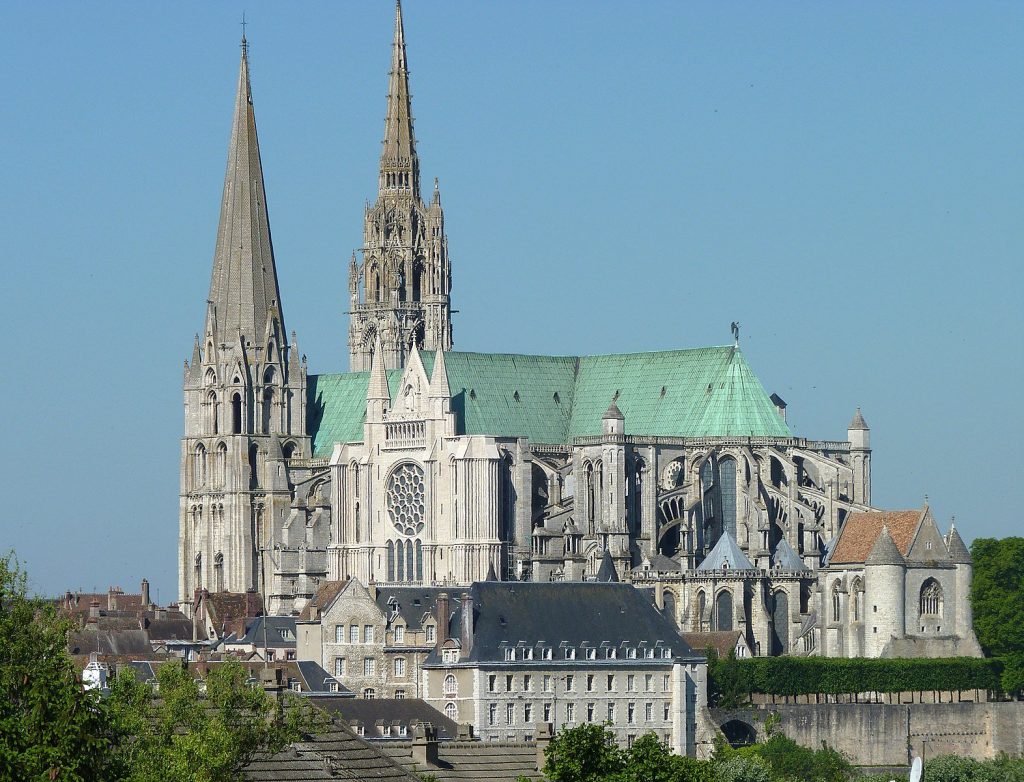
Famed for it’s sheer size and magnificent Gothic architecture, the quality and quantity of it’s sculptures, it’s magnificent blue stained glass windows and a remarkable collection of relics, this most spectacular cathedral was classified as an ‘Outstanding Monument’ at the same time as Mont St Michel, Vezelay Abbey and the Chateau of Versailles. That’s good company to be in.
As I arrived at the cathedral there was a service of sorts underway and so I started with a tour around the outside of the building; admiring the two lofty spires at the front of the building (one in the Gothic style and the other Romanesque) and numerous intricately carved flying buttresses at the rear. Most impressive however are the Cathedral’s three portals which are rich in ornate sculptures featuring old testament prophets, relief scenes of Christ’s life, the apostles and various martyrs, etc. The detail on and around the different entrances is incredible.
As I entered the Cathedral I realised it wasn’t a regular religious service underway but a choir performing some rousing ‘a capella’. To describe the music as exhilarating doesn’t do it justice; it was glorious. The choir was very good but it was bad timing on my part (the performance was being filmed for for television and neither the choir nor the tv producers would want me wandering the church during the performance). I didn’t have the time to sit and enjoy the show and so I restricted myself to simply walking those parts of the church where I wouldn’t prove a distraction. I didn’t get to see anything of the altar and not very much of the cathedral’s abundant stained glass collection. I missed out too on the Sancta Camisa (which is part of the silk tunic which the Virgin Mary supposedly wore when giving birth to Jesus and which is, arguably, the most historic of all the cathedral’s relics). I did however have the ambulatory almost to myself and was able to spend a fair time admiring the splendid stone screen (the rood) which surrounds much of the chancel. It is a stunning mix of statues which had not long been cleaned and so looked brand new.
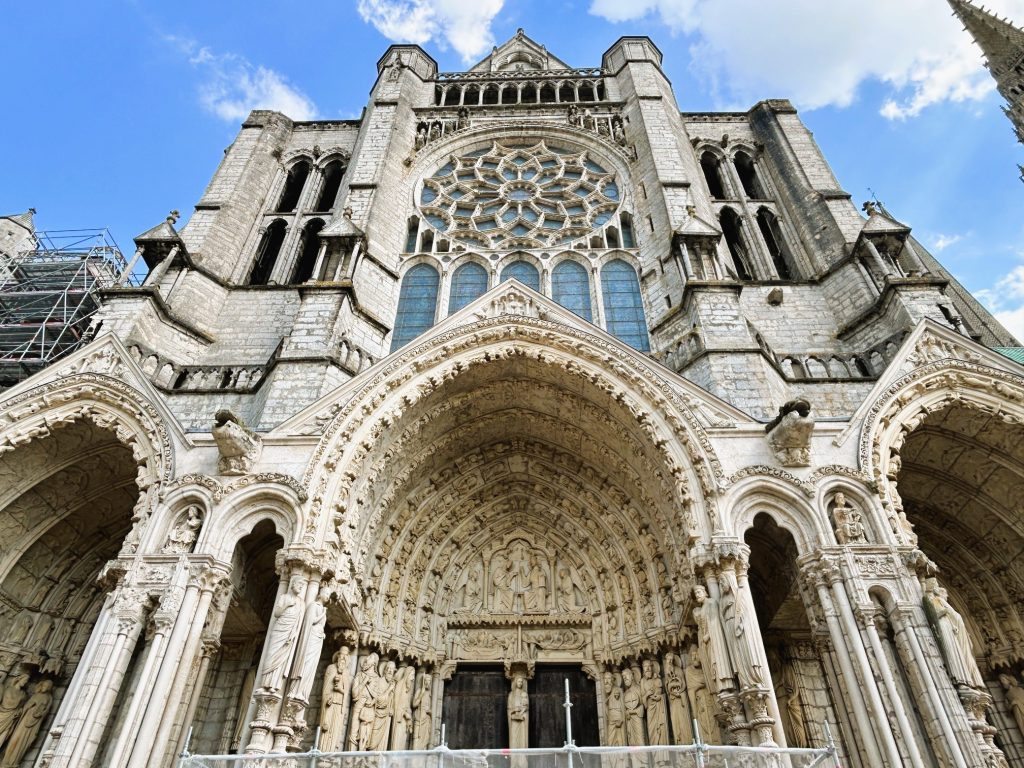
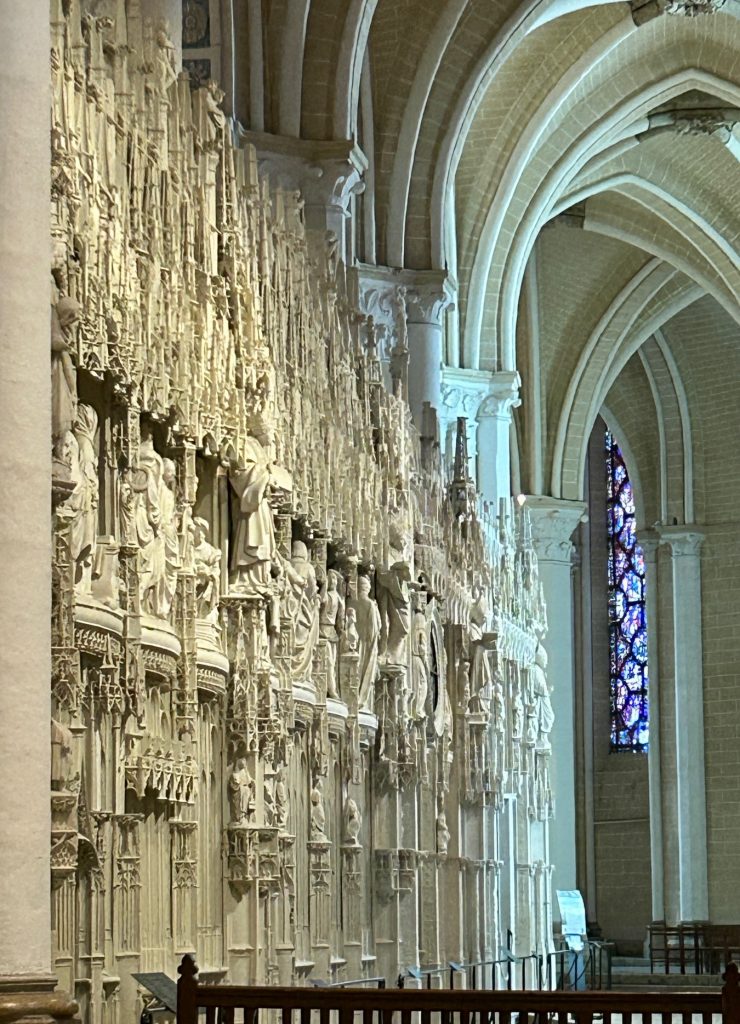

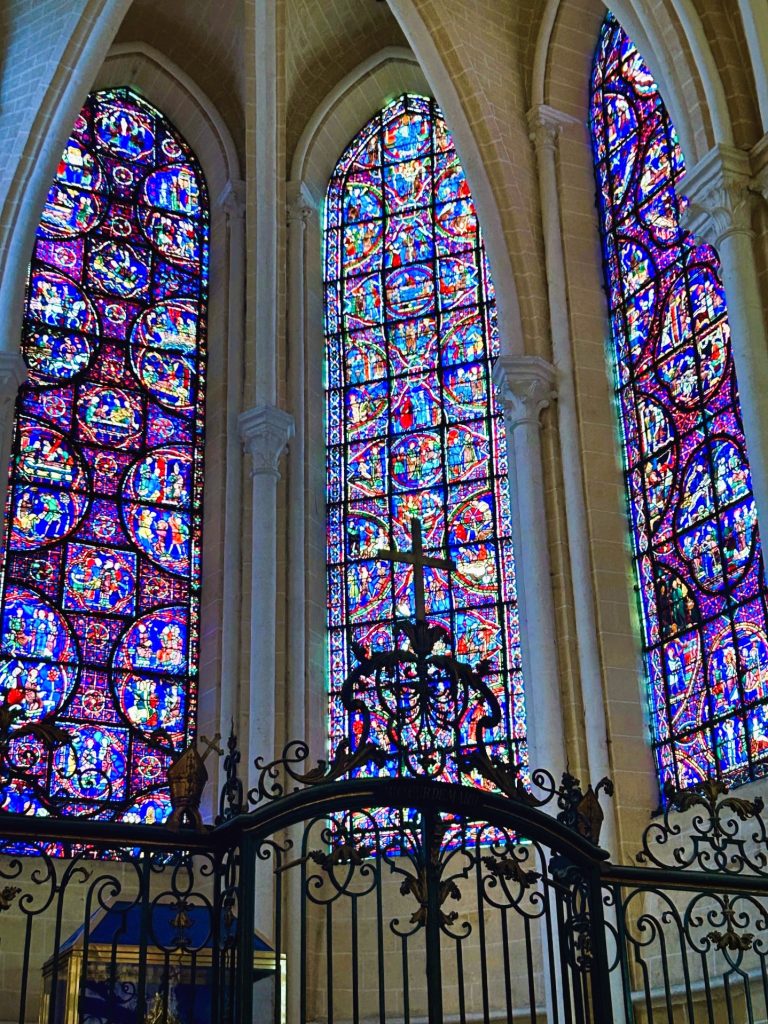
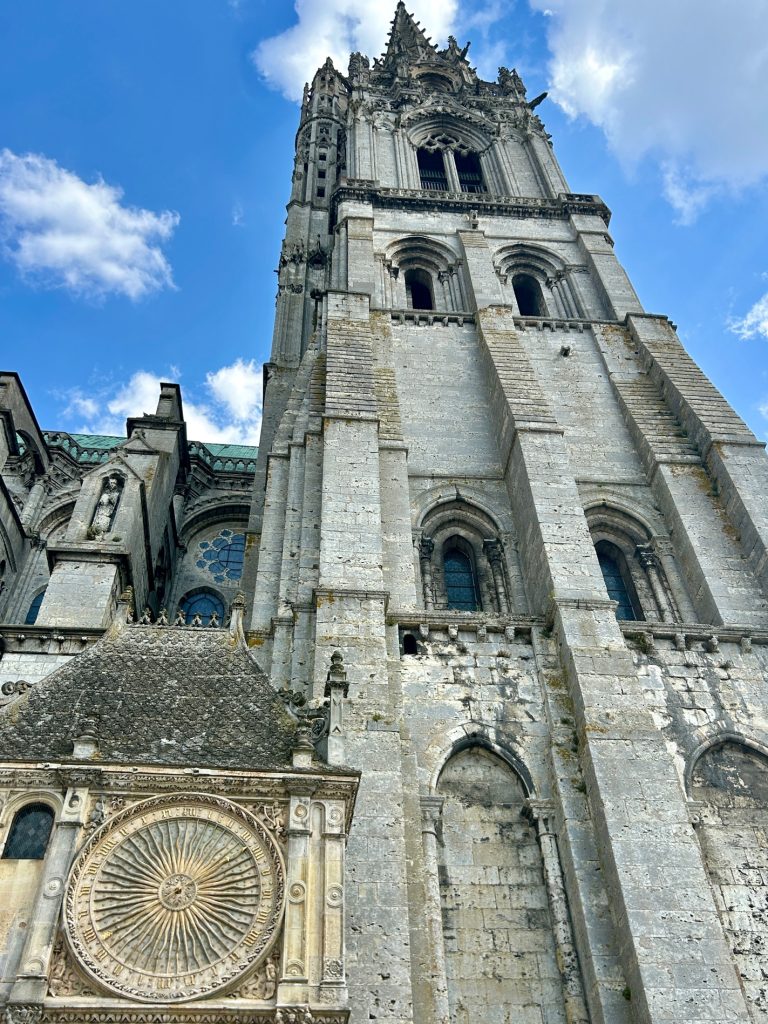
What sets this cathedral apart from most others in France is how well preserved it is, even after all the deprecations caused during the French Revolution. The contents were plundered early in the revolution and the Sancta Camisa was shredded by the mob (only two small rectangles of silk remain) but, despite the new government ordering that the cathedral be demolished, it survived after a local architect cautioned that the resulting huge pile of rubble would block all of the roads in the city centre for years to come.
The cathedral again escaped destruction in 1944 (during the Second World War) when it was thought by approaching US forces that a mix of German soldiers (artillery range finders and snipers) had esconced themselves in the cathedral spires. A decision was made to reduce the cathedral to rubble but before the bombardment could begin a US Army Colonel Welborn Barton Griffith Jr, who understood the historical significance of the church, offered to enter the cathedral and check the situation for himself. Finding no Germans, he was able to report that the building was empty and the order to destroy the cathedral was rescinded. The cathedral was saved but tragically, the colonel was killed in action later that same day in a village just two miles north of Chartres.
On my back to the Van, I popped in on another impressive and historically significant building which is just behind the cathedral. It is the former Episcopal Palace, largely rebuilt during the 17th and 18th centuries but which hosted the coronation of Henri IV of France (Henri de Navarre) in 1594. It is now a museum (the Musee des Beaux-Arts) and it was holding an exhibition of work by Gerard Rancinan and Caroline Gaudriault; the main feature of which was a monumental photograph called La Deluge (the Flood). It is an impressive piece of work but, for my part, I think the artist has taken one of my favourite paintings, Gericault’s ‘Raft of the Medusa’, as his inspiration.
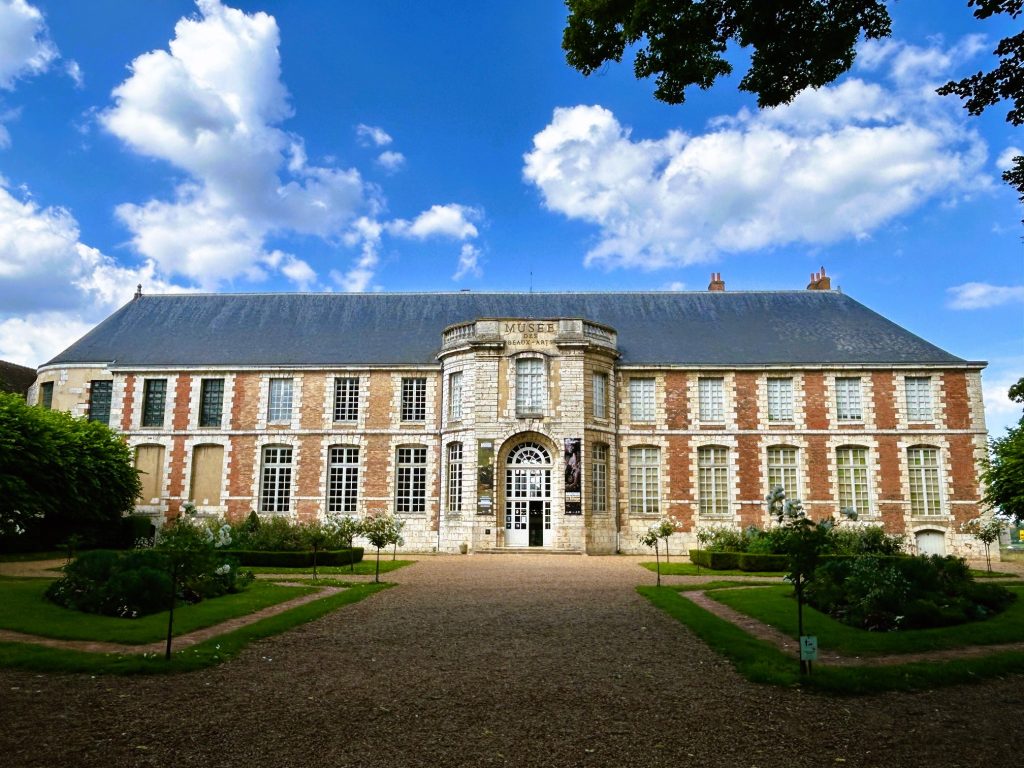
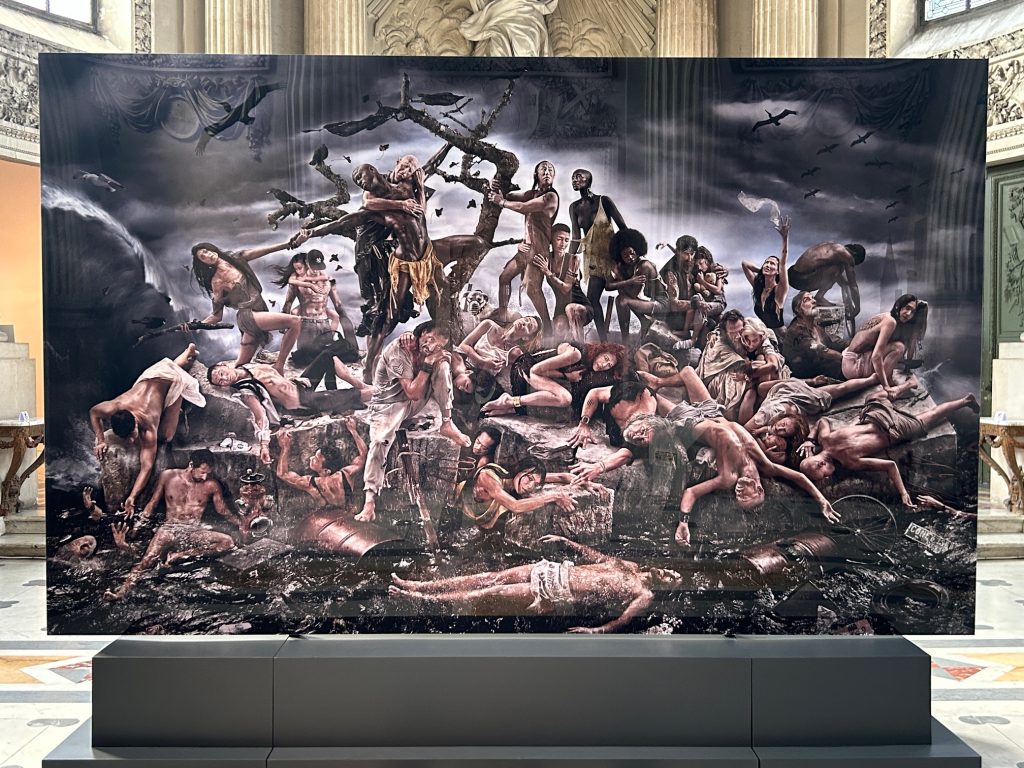
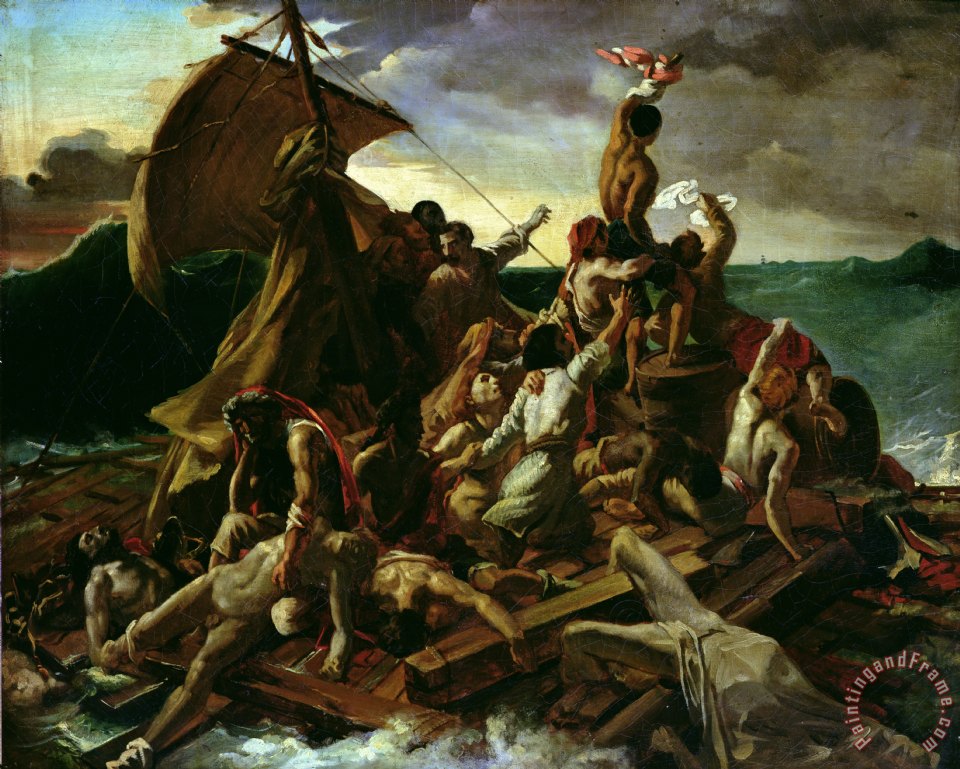
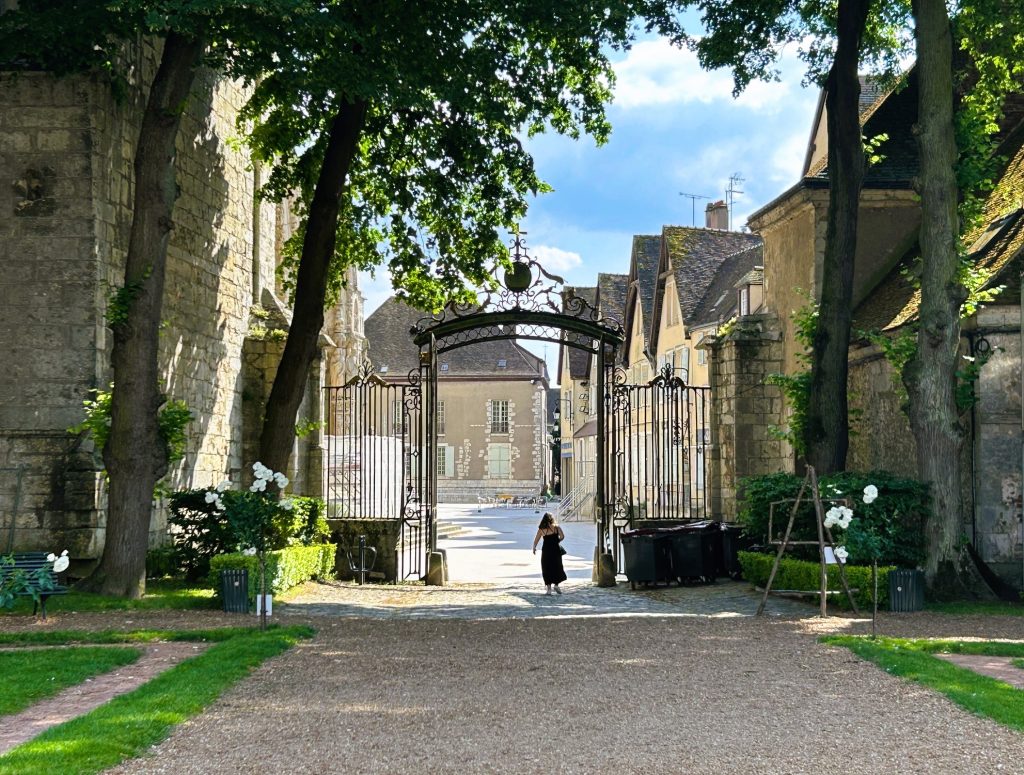
I returned to Chartres later that evening with Vanya (and our two dogs) and showed her those parts of the town which I believed would most interest her but; we were there primarily to see the light and sound show (Chartres en Lumieres). There was no rush; the show couldn’t begin until dusk at the earliest and we therefore had plenty of time to see the sights and enjoy a bottle of wine at the bar I had earmarked earlier on Place Billard.
We were at the front entrance to the cathedral at 10.45pm, just as Chartres en Lumiere was starting. Earlier, the tourist information office had issued me with a city map and brochure which identifies start and finish times (they vary according to the season) and lists the 21 buildings which are lit up. You can then plan for yourself which elements you want to see (and when) but, it is recommended you be at the front of the cathedral for the start of the event. We intended to do that and then follow the display down through the old town by the River Eure before finishing at L’Eglise Saint Pierre. That would carry us through to well after midnight.
The show was stunning. I took a few photographs which could never do the display justice but, if I’m honest, I wasn’t interested in taking photos. I simply wanted to enjoy the spectacle. The lights and accompanying music showcased the cathedral so perfectly, I was almost spellbound. Vanya, more wisely, took video; some of which I will no doubt include in my video of this tour when I get round to doing it.
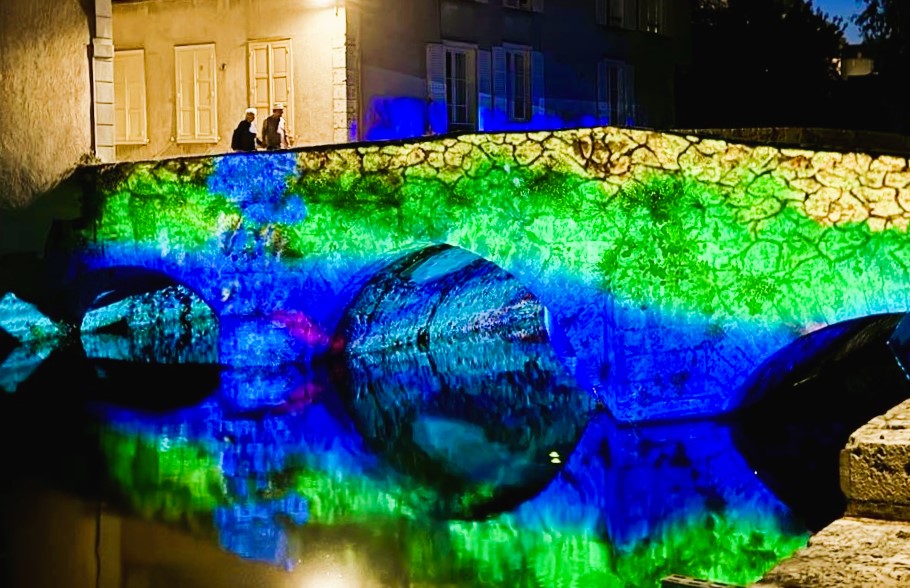

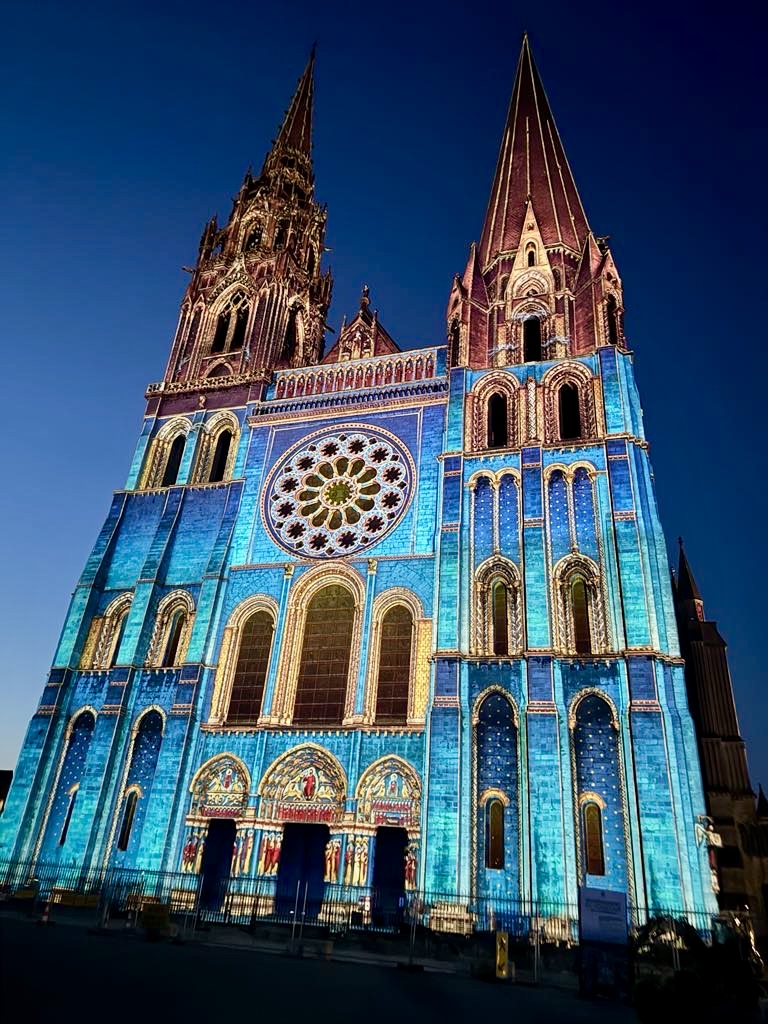
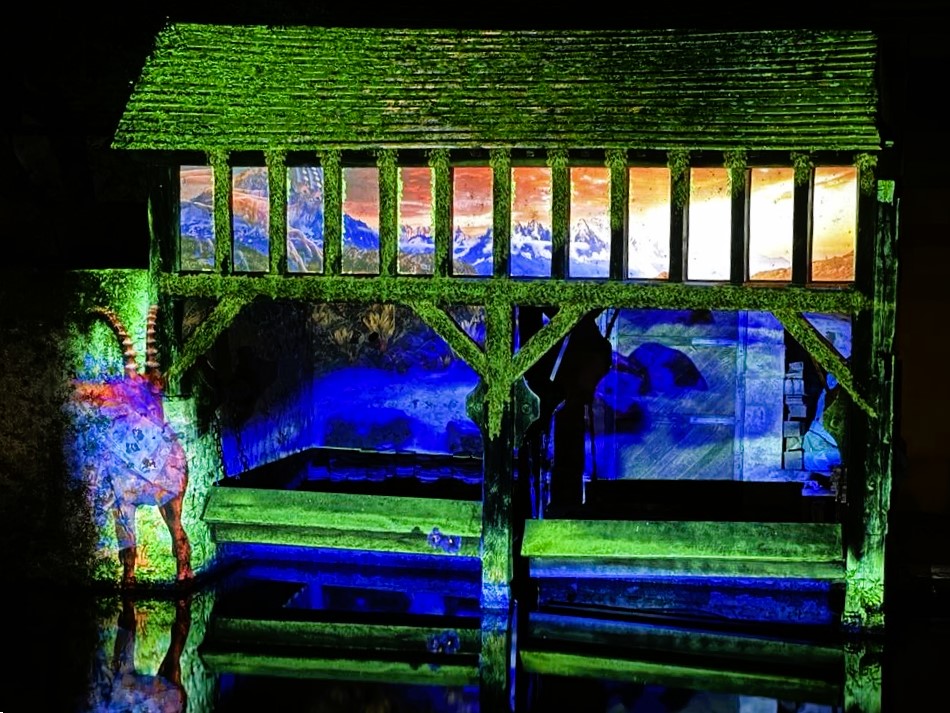
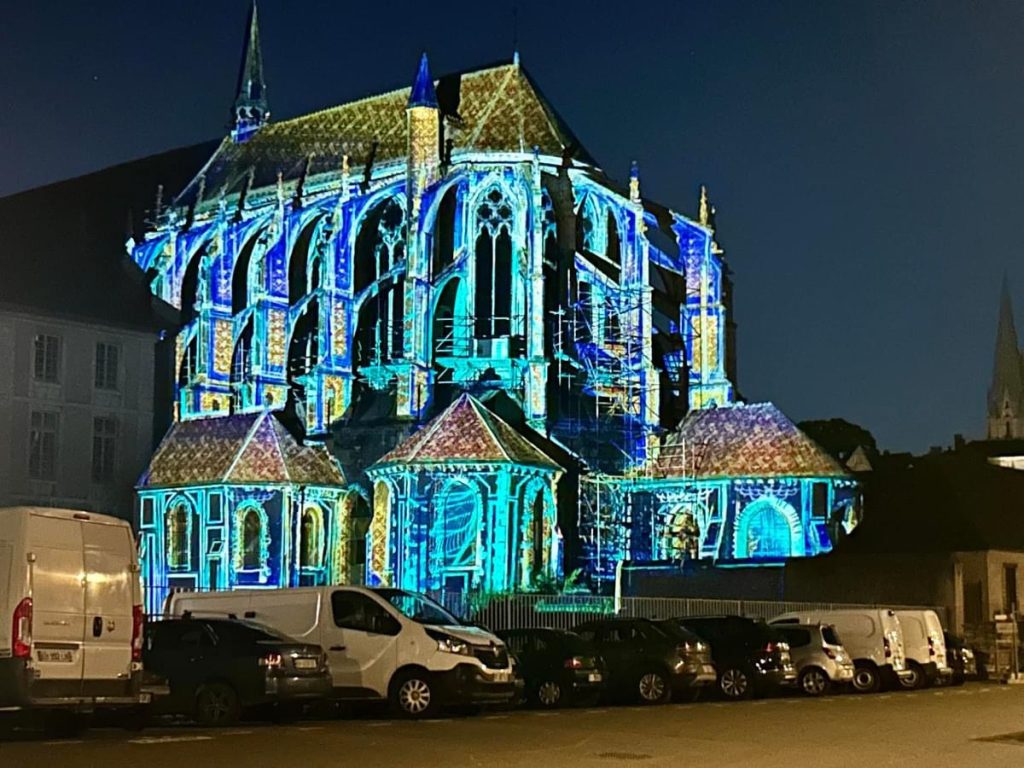
We headed back to the Van not long after midnight but the light show was set to continue until about 1am.
Our stay in Chartres was all too short but we had to move on to Normandy. Amongst other things, we needed to get the dogs to our vet in Fecamp for the medical check that would allow them to be readmitted to the UK (and our return ferry was scheduled for early the following week). Before then, we also wanted to return to Yport for dinner at one of our favourite restaurants (Le Nautique) and; in addition to that, Vanya had booked us into a boutique hotel in Pont Audemeyer where we were to celebrate my birthday. Honestly, these tours can on occasion be quite stressful… Lol.
We’ll definitely return to Chartres and, all things being equal, we would stay longer. It’s a beautiful city and I know we didn’t take full advantage of the place. Two things we missed out on are the local cheese (Dreux a la Feuille) and the astonishing Maison Picassiette (built by a certain Raymond Isidore). I’ll not go into detail now. This blog is already long enough but, they’ll be our starting points next time we are in Chartres. Instead, I’ll simply finish with a couple of photos (not mine) so as to provide a taster.
